Discover 11 hidden attractions, cool sights, and unusual things to do in Douala (Cameroon). Don't miss out on these must-see attractions: Palace of the Kings Bell, Doual'art, and Cathedral of Saints Peter and Paul. Also, be sure to include Former general Hospital of Douala in your itinerary.
Below, you can find the list of the most amazing places you should visit in Douala (Littoral).
Table of Contents
Palace of the Kings Bell
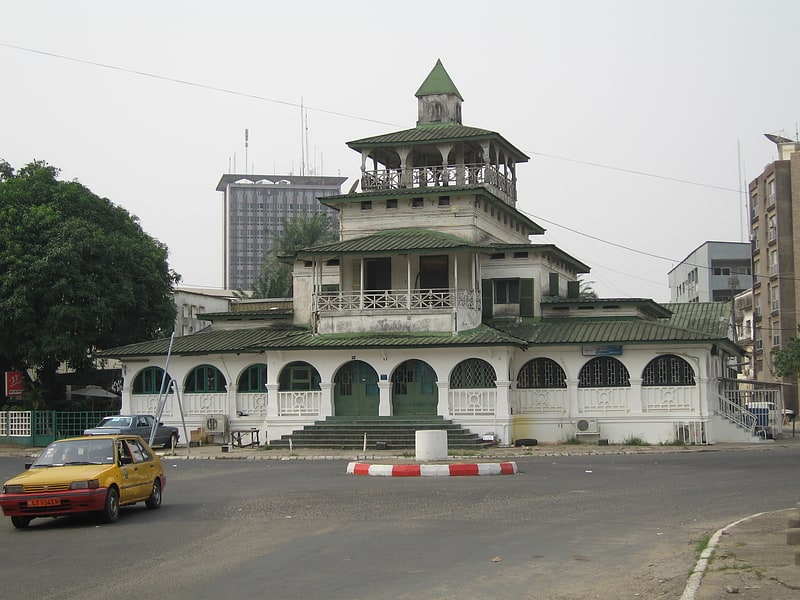
The Palace of the Kings Bell situated in Douala is a building constructed in 1905 by the Germans for King Auguste Manga Ndumbe. The building is also known as La Pagode; this name comes from the French writer Louis-Ferdinand Céline, who remained in Douala in 1916-17, who calls it such in his famous novel Voyage au bout de la nuit.[1]
Doual'art
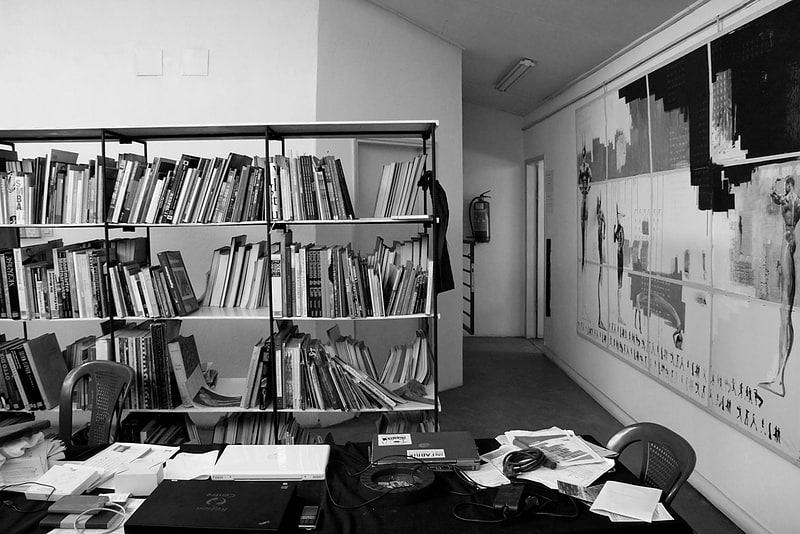
Non-profit. doual'art is a non profit cultural organisation and art centre founded in 1991 in Douala, Cameroon and focussed on new urban practices of African cities.[2]
Cathedral of Saints Peter and Paul
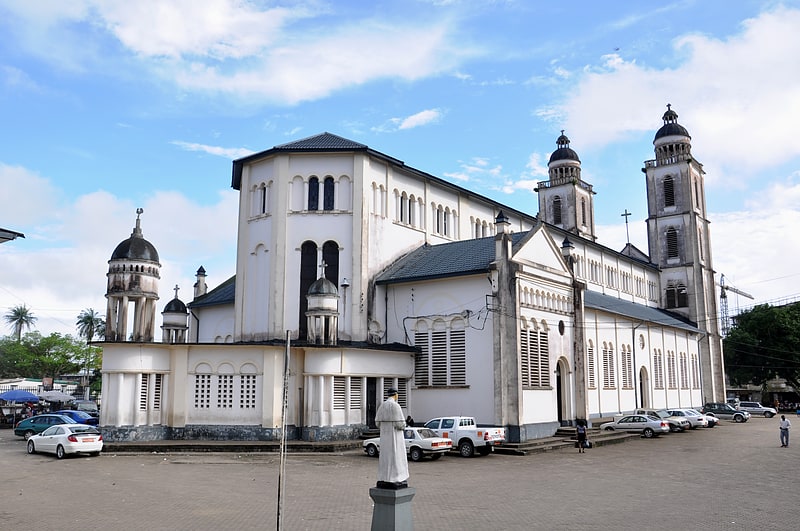
Cathedral in Douala, Cameroon. The Cathedral of Saints Peter and Paul - situated in Douala, Cameroon - is the cathedral of the Roman Catholic Archdiocese of Douala and dedicated to St Peter and St Paul.[3]
Former general Hospital of Douala
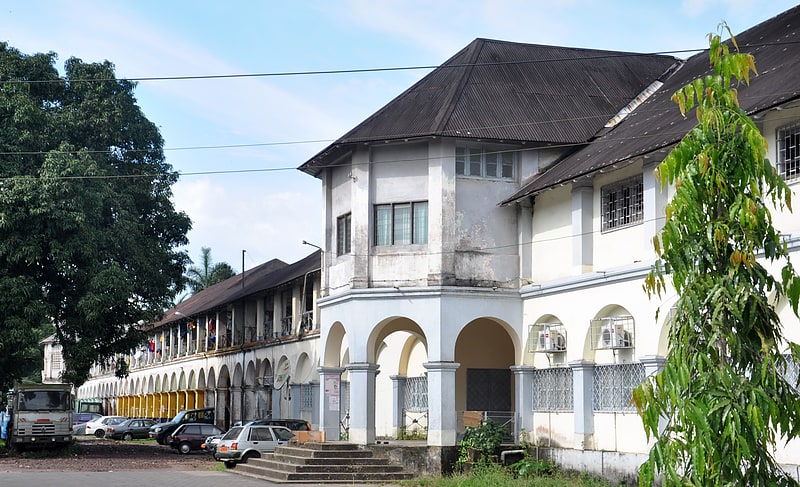
The former General Hospital situated in Douala is a building constructed in 1896 by the Germans and designed by the architect Henri Drees.[4]
Chamber of Commerce
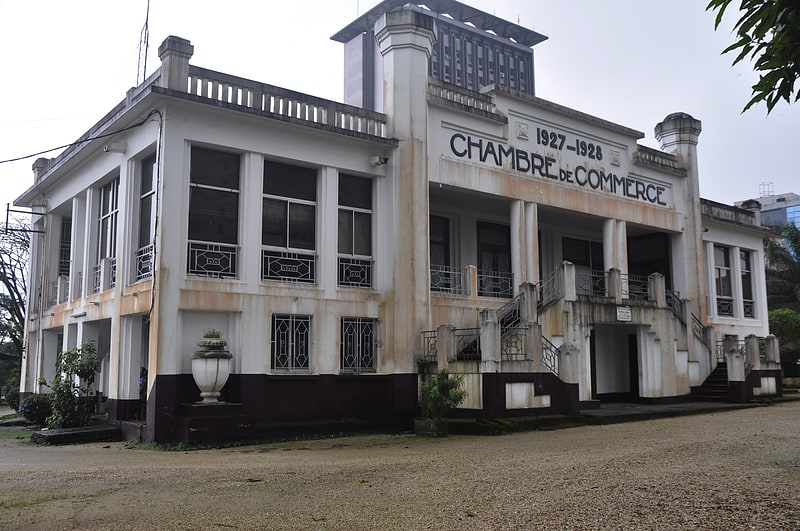
Building in Douala, Cameroon. The Chamber of Commerce in Douala, Cameroon is a building constructed between 1927 and 1928 under the French mandate, under the umbrella of the League of Nations. This building is in a late Art Nouveau architectural style.[5]
Villa Mandessi Bell
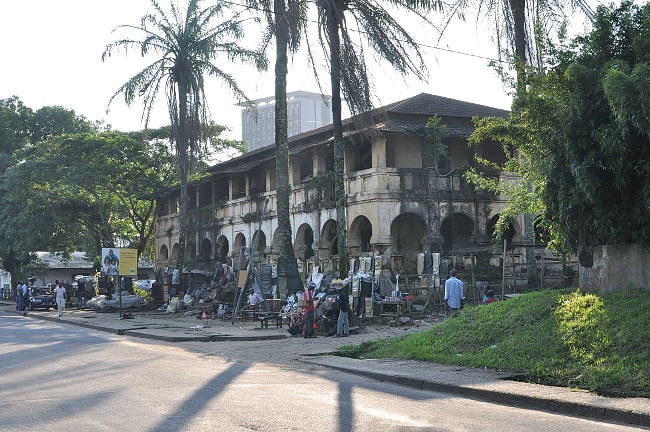
The villa Mandessi Bell situated at Douala is a building constructed between 1904 and 1909 by David Mandessi-Bell a rich farmer and commissioner of the king Rudolf Manga Bell. This building is and architecture from the colonial period. It is a representation and legacy of the German occupation in Cameroon.[6]
La Nouvelle Liberté
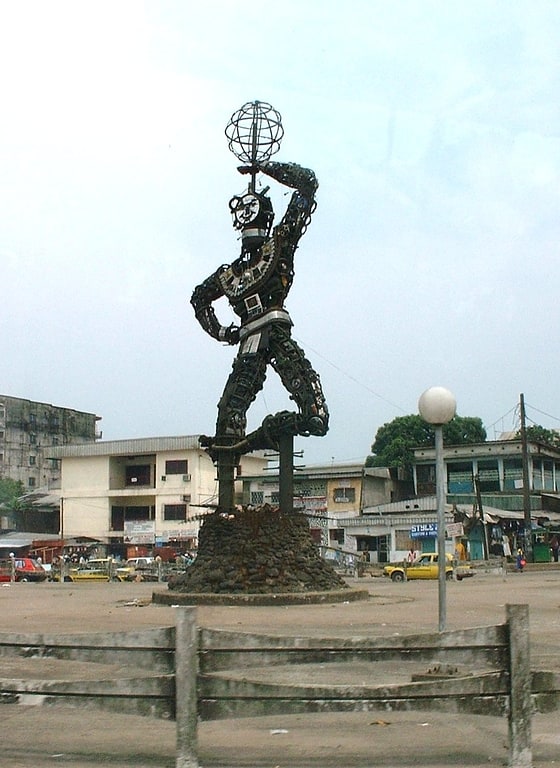
La Nouvelle Liberté is a public artwork in the Deido suburb, in Douala.[7]
Address: Quartier Deido, Douala
Bonakouamouang Chimney
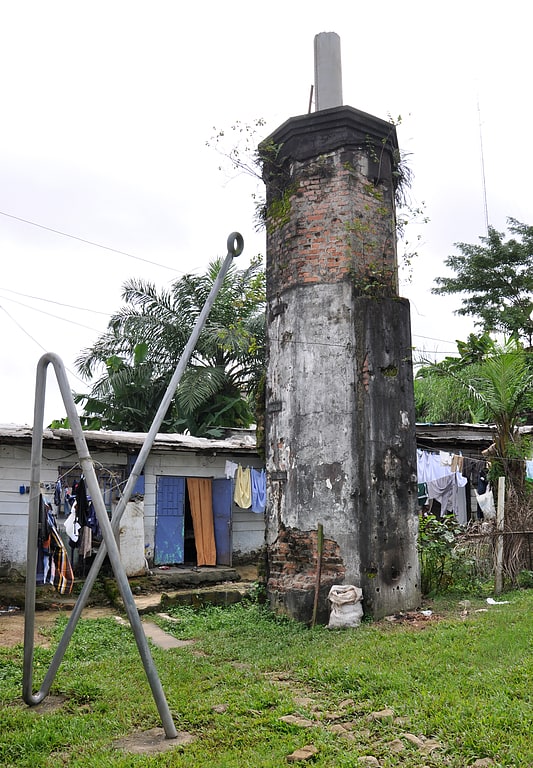
The Bonakouamouang Chimney – situated in Douala, Cameroon in the district of Akwa neighborhood of Bessegue – is a relict of the waterworks built by the Germans at the beginning of the 19th century. The waterworks was part of the first phase of industrial investments aimed at the urbanisation of Kamerunstadt.
The supply of running water was necessary to allow the implementation of the major development works which would radically transform the traditional village of Douala into an urban agglomeration of administrative and commercial buildings, private residences, places of worship and schools. The urban plan of von Brautisch, head of Kamerunstadt district under the government of Jesko von Puttkamer (1895-1907), changed the local way of life and economy: wide streets were opened up, the Bonaku (Akwatown) marshes were drained, an embankment was built providing a route between Bonanjo and Akwa, the harbour area was expanded.. henceforward denying fishermen any direct access to the river. The railway infrastructure created from the beginning of the 20th century was to develop communications with the country’s interior. Thus the Besséké valley became home to the first station on the town’s left bank, in the port area. From 1909 the Northern railway line was completed, linking Bonabéri and Nkongsamba. Work on the line joining Douala and Yaoundé began at the end of 1910-beginning of 1911.
Requisitioned as forced labour for these undertakings, the human cost of laying the foundations for the new colonial economy was a high one for the local workforce.
In 2006 the building is highlighted by an urban sign produced by doual'art and designed by Sandrine Dole; the sign presents an historical image of the building and a description of its history.[8]
Former police station of Douala
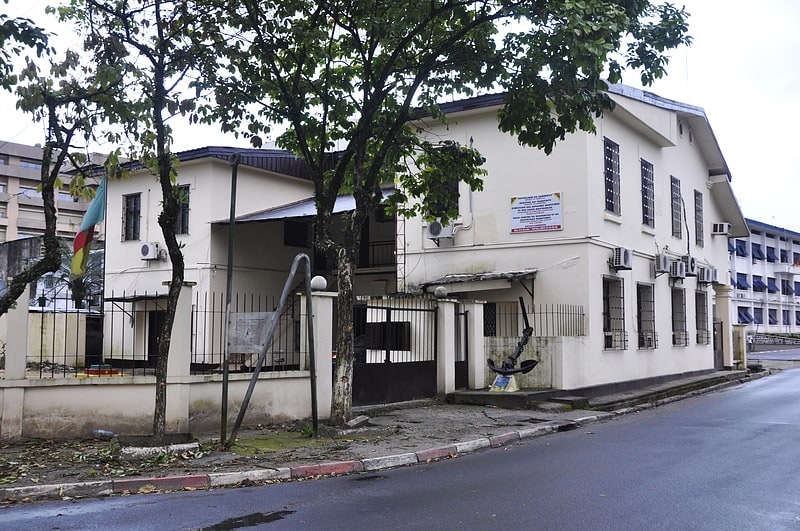
The former police station situated in Douala is a building constructed at the beginning of the 20th century by the Germans to serve as the first police station under the German mandate.[9]
Ancien Siège Woermann Linie
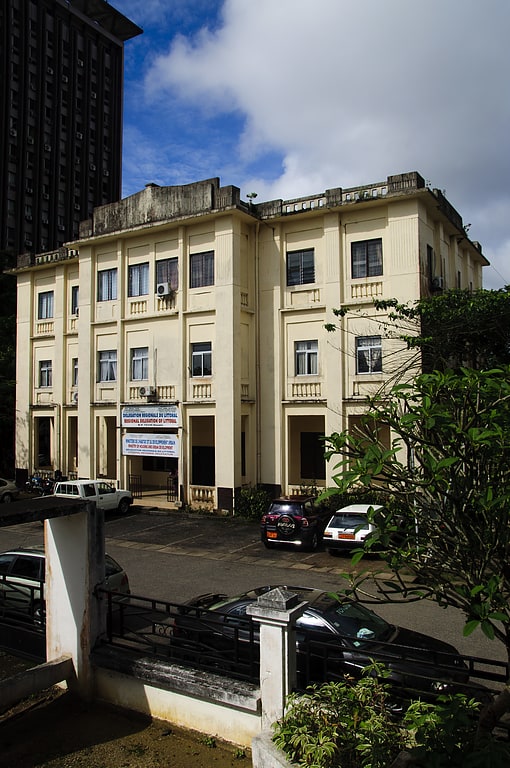
Old German government headquarters in Douala

The old German government headquarters situated in Douala is a building constructed in 1891 by the Germans in a classical Prussian style.[10]